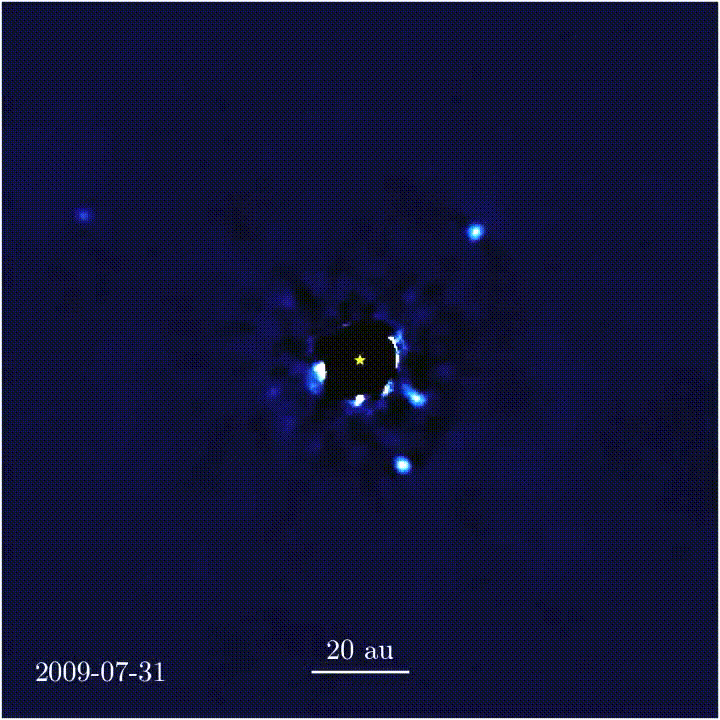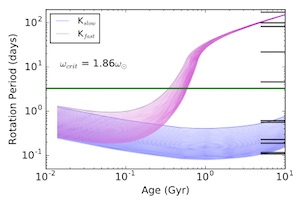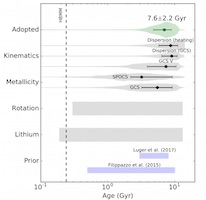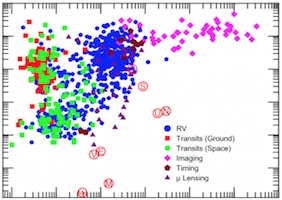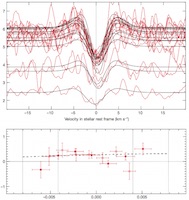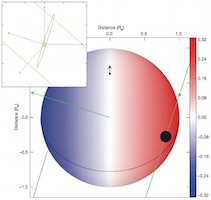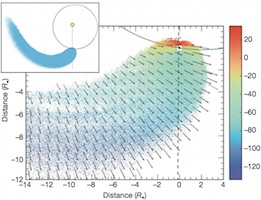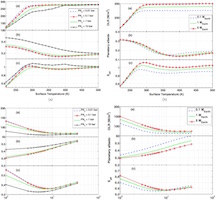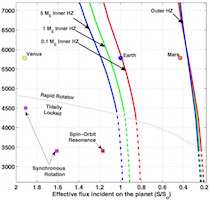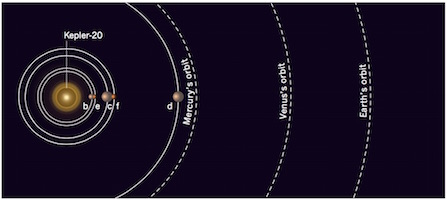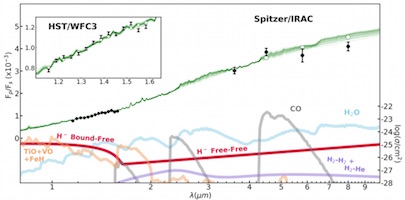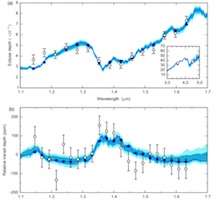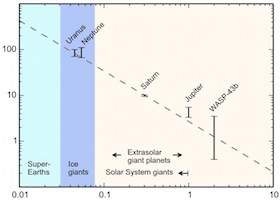Astronomy 61:
Current Problems in Astronomy and Astrophysics
Spring 2018
Prof. David Cohen
Archive of papers
|
Week 13 posted Apr 16: Rhys has chosen "Direct Imaging of Multiple Planets Orbiting the Star HR 8799," Marois et al., Science, 322, 1348, 2008. Post at least one question on the new Moodle forum by Thursday at 10 pm. And please read each other's questions – and answer them if you want.
Week 12 posted Apr 16: Miriam has chosen "On the Age of the TRAPPIST-1 System," Burgasser and Mamajek, Astrophysical Journal, 845, 110, 2017. Post at least one question on the new Moodle forum by Thursday at 10 pm. And please read each other's questions – and answer them if you want.
Week 11 posted Apr 11: Sid has chosen "Exoplanets around Low-mass Stars Unveiled by K2," Hirano, et al., Astronomical Journal, 155, 127, 2018. Post at least one question on the new Moodle forum by Thursday at 10 pm. And please read each other's questions – and answer them if you want.
Week 10 posted Apr 4: Selina has chosen "The Architecture of Exoplanets," Hatzes, Space Science Reviews, 205, 267, 2016. Post at least one question on the new Moodle forum by Thursday at 10 pm. And please read each other's questions – and answer them if you want.
Week 9 posted Mar 27: Sophia has chosen "Orbital misalignment of the Neptune-mass exoplanet GJ 436b with the spin of its cool star," Bourrier, et al., Nature, 553, 477, 2018. Post at least one question on the new Moodle forum by Thursday at 10 pm. And please read each other's questions – and answer them if you want.
Week 8 posted Mar 21: Vaughn has chosen "A giant comet-like cloud of hydrogen escaping the warm Neptune-mass exoplanet GJ 436b," Ehrenreich, et al., Nature, 522, 459, 2015. Post at least one question on the new Moodle forum by Thursday at 10 pm. And please read each other's questions – and answer them if you want.
Week 7 posted Mar 5: Natasha has chosen "Habitable Zones around Main-sequence Stars: Dependence on Planetary Mass," Kopparapu, et al., Ap.J., 787, L29, 2014. Post at least one question on the new Moodle forum by Thursday at 10 pm. And please read each other's questions – and answer them if you want.
Week 6 posted Feb 24: Karina has chosen "Seven temperate terrestrial planets around the nearby ultracool dwarf star TRAPPIST-1," Gillon, et al., Nature, 542, 456, 2017. Please also read the short "News and Views" article (Snellen, "Earth's seven sisters"). Post at least one question on the new Moodle forum by Thursday at 10 pm. And please read each other's questions – and answer them if you want.
Week 5 posted Feb 20: Graham has chosen "Two Earth-sized planets orbiting Kepler-20," Fressin, et al., Nature, 482, 195, 2012. The paper is short (but/and terse). Please also read the short "News and Views" article (Queloz, "Extrasolar planets: An Earth-sized duo") that sort-of introduces, or puts in context, the main article (this is a standard feature of Nature). Post at least one question on the new Moodle forum by Thursday at 10 pm. And please read each other's questions – and answer them if you want.
Week 4 posted Feb 11: Gabby has chosen "H- Opacity and Water Dissociation in the Dayside Atmosphere of the Very Hot Gas Giant WASP-18 b," Arcangeli, et al., arXiv:1801.02489, 2018. Note that this is a preprint – not yet published in a journal. Post at least one question on the new Moodle forum by Thursday at 10 pm. And then check back for replies.
Week 3 posted Feb 4: Katie has chosen "A Precise Water Abundance Measurement for the Hot Jupiter WASP-43b," Kreidberg, et al., Ap.J.L., 793, L27, 2014. Post at least one question on the new Moodle forum by Thursday at 10 pm. And then check back for replies.
Week 2 posted Feb 1 We read last week that transits imply secondary eclipses, and both can be used to study exoplanet atmospheres. The more straight forward way is via absorption spectroscopy when the exoplanet is transiting in front the star but when the exoplanet passes behind the star, its own emitted light is missing and by subtracting the spectrum of the system during secondary eclipse from one taken right before the eclipse starts, the emission spectrum of the exoplanet can be (barely) seen. This week's paper – Fortney et al., "Comparative Planetary Atmospheres: Models of TrES-1 and HD 209458b," Ap.J.L., 627, L72, 2005 [ADS] – is another ApJ Letter (so four pages, and designed to get preliminary results published quickly, without a huge amount of supporting evidence described. It is a theoretical study of the atmospheres of HD209458b and TrES-1. In the paper, some data showing measurements of the atmospheric spectra are shown, as well as models of the atmospheres. Post your questions in the Moodle forum by 9pm on Thursday.
Week 1 posted Jan 23 OK! We're going to read and discuss Charbonneau et al., "Detection of Planetary Transits Across a Sun-Like Star," Ap.J.L., 529, L45, 2000 [ADS]. Please read this short paper quite soon. Plan on reading it a couple more times, and slowly, looking things up as needed and making notes for yourself. On Thursday night you should post a question to a Moodle forum I'll set up. And we will meet on Friday to discuss the paper. After almost an hour, we'll realize we've learned a lot but that there's still a lot we don't understand. So, we'll continue next week with the same paper. posted Jan 24 The Moodle forum in which you should post your questions about the Charbonneau et al. paper is now open. Please post a question by 11 pm on Thursday. posted Jan 21 For our first paper of the semester (to be discussed the first two weeks of the semester) we are deciding between the paper reporting the discovery of the first exoplanet around a normal star, 51 Peg b (Mayor et al. 1995), and the first discovery of an exoplanet transit, HD 209458 b (Charbonneau et al. 2000). |
Back to the main class page.
Comments or suggestions to David Cohen.
Last modified: April 27, 2018
